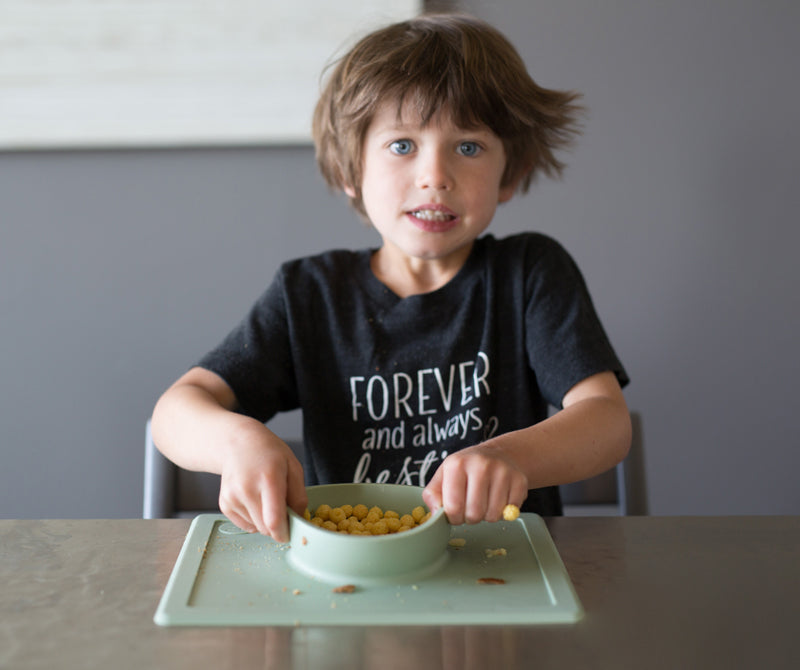Family mealtime can provide children a sense of comfort. But what if a toddler is anxious about mealtime and refuses to come to the table? Or, worse, refuses to eat? Here are some insights and tips to help a child with mealtime anxiety.
Feelings: Sometimes a toddler doesn’t have problems with eating, it’s their feelings about food that causes hesitation at mealtime. A child who gets emotional when two foods touch or screams when a brightly colored veggie is first introduced is communicating their feelings. They simply don’t have the language skills to express these feelings. Here are a few tips to help toddlers with emotional expression at mealtime:
- I have the most success with anxious toddlers when I talk about their worries surrounding mealtime. Instead of forcing them to "just eat," I urge them to describe how they feel. 'I’m mad', ‘I’m tired’ and 'I’m scared' are common themes when talking about new foods.
- I make food art with my feeding therapy kiddos that depicts the emotion they are describing. Food art can be a fun way to get kids feeling curious about a new food, which is the first step to eating it! Turn a basic PB&J sandwich into a fun emoji by creating a circular face, a scoop of jelly for the smile and two candy eyes. Presto chango...you have an excellent conversation starter at mealtime!
Consistency: Do you know of a child that consistently wants the same meal? These kids may struggle with anxiety at mealtime, and by requesting / eating the same foods they are regulating that fear. Here are some suggestions to help:
- For some children, food is emotionally driven by textures, temperature, smells, colors and even how it is presented. Try to keep at least one of these features consistent – like serving food on the Happy Mat for all meals.
- I use play therapy to help kids break out of the tendency to eat the same foods to calm anxiety. Pretend play is an important aspect in child development. By encouraging kids to explore pretend foods (plastic play foods) you are exposing them to new colors, shapes and textures.
Scenery: Sometimes a change of scenery will alleviate anxiety and make mealtime more enjoyable for kids. Here are some ideas to spruce up the fun meter:
- Eat at the kid's table! Your child will love having you eye-to-eye with them, and they are more likely to model your behaviors (like trying a new food!) during this close encounter.
- Have a picnic in the front yard, on a park bench, or next to the pool. Having mealtime outside gives you the chance to teach stressed and distracted eaters a new feeding skill that may be too messy to perform inside. Things to try: drinking from an open cup, licking a popsicle or learning to use a fork!
Do you have a child that seems to struggle with anxiety at the dinner table? What are your tips for making family mealtimes less anxiety-inducing for your toddler? #ezpzfun #toddlerlife



